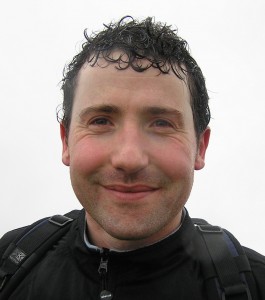For our Blog Competition 2013, we asked for people to submit articles addressing one of two topics. Philip Irwin’s article makes an argument for the inclusion of development education in geoscience courses, and it won first prize in its category.
 Philip did BSc Geology at Durham University where he developed an interest in environmental hazards. He then spent some time travelling to places that had been affected by such hazards, including Bukit Lawang and Banda Aceh. Upon return to the UK he did a MSc in Disaster Management and Sustainable Development at Northumbria University. Philip is interested in both the social and the physical side of hazards, and faced with a decision between the two he is now doing a MSc in Volcanology and Geological Hazards at Lancaster University. Both Philip, and the team at Geology for Global Development, hope that in future a more inclusive approach to hazards education will mean that early career scientists such as Philip no longer have to face a stark choice between studying the physical or the social aspect of hazards. You can find Philip on twitter (@PhilipIrwin2).
Philip did BSc Geology at Durham University where he developed an interest in environmental hazards. He then spent some time travelling to places that had been affected by such hazards, including Bukit Lawang and Banda Aceh. Upon return to the UK he did a MSc in Disaster Management and Sustainable Development at Northumbria University. Philip is interested in both the social and the physical side of hazards, and faced with a decision between the two he is now doing a MSc in Volcanology and Geological Hazards at Lancaster University. Both Philip, and the team at Geology for Global Development, hope that in future a more inclusive approach to hazards education will mean that early career scientists such as Philip no longer have to face a stark choice between studying the physical or the social aspect of hazards. You can find Philip on twitter (@PhilipIrwin2).
One of the greatest challenges we face as scientists is the successful communication of our ideas (and particularly our warnings) to the public. But sometimes, communicating with each other can be just as difficult.
This is a fact that extends across the entire gamut of ‘natural’ disasters, from those that we might consider climatically forced (such as floods and droughts) to those that are the consequence of our dynamic Earth (e.g. earthquakes and volcanoes). On one hand, are the physical scientists, looking to mitigate disasters through gaining a deeper understanding of the Earth processes that are at play, and often proposing ‘technocratic’ solutions in the form of sophisticated monitoring techniques and early warning systems. And on the other, there are the social scientists, which often look to increase resilience at the community level, through such initiatives as outreach programs and focus groups.
In order to enact meaningful disaster risk reduction in developing countries (and elsewhere), it is essential that strategies are considered within the context of an interdisciplinary framework, i.e. there needs to be greater collaboration between the physical and social sciences.
In recent years there has been a growing appreciation of the benefits of cross-disciplinary research in the field of environmental hazards (e.g. Chester, 2005; Jones and Macdonald, 2007) and particularly in my main area of interest: volcanic hazards. Research is no longer exclusively geological, but considers the specific vulnerabilities of different demographics, and their position in a geographic, cultural and political context. New buzz words have emerged such as ‘resilience’ and ‘capacity-building’, and there is a growing sense that disasters are not so ‘natural’, but rather, are a product of our own misadventure (e.g. Wisner et al. 2005).
Currently however, although scientists from different fields may be willing to embrace each-others ideas and innovations, they are often likely to lack what Collins and Evans (2007) term ‘interactional expertise’, i.e. the ability to engage with multiple disciplines on a sophisticated level. As such, it is vitally important that this shortcoming is addressed during the undergraduate and/or postgraduate geoscience courses (and conversely, some level of exposure to geoscience concepts would be beneficial to those enrolled on sustainable development courses).
As someone with a background in Geology (BSc) who has recently completed an MSc in Disaster Management and Sustainable Development, I feel I am particularly well placed to comment on the matter. Certainly, it was been my experience that scant attention is given to development issues during the course of an Earth Science degree, and likewise, little or no effort was made during the social science degree, to understand the underlying physical processes and mechanisms driving environmental hazards. This leads to a situation where (at best) workers with very different skill sets may be willing to collaborate as part of a multi-disciplined team, but may not be very well equipped to do so. This assumes of course, that the researchers respect and value one another’s view-points in the first instance: a crucial detail and one that is far more likely to be realised if they each have been exposed to the other’s discipline as part of their own training.
The inclusion of development education in geoscience courses (and vice versa) should ensure that our graduates and postgraduates are multi-disciplined from the outset (rather than having to be ‘retrained’ in the field), leading to a more effective and efficient union and providing greater overall protection against the whole spectrum of environmental hazards. The benefits to the individual and society are obvious, and our universities must play a pivotal part in this evolution, which in turn serves to ensure their own continued growth and sustainability.
The question that remains is: do you want to be a social scientist with an understanding of Earth’s underlying physical processes? Or, a physical scientist with a grasp of the social dynamics that are at play?
For me personally, it is the latter.
